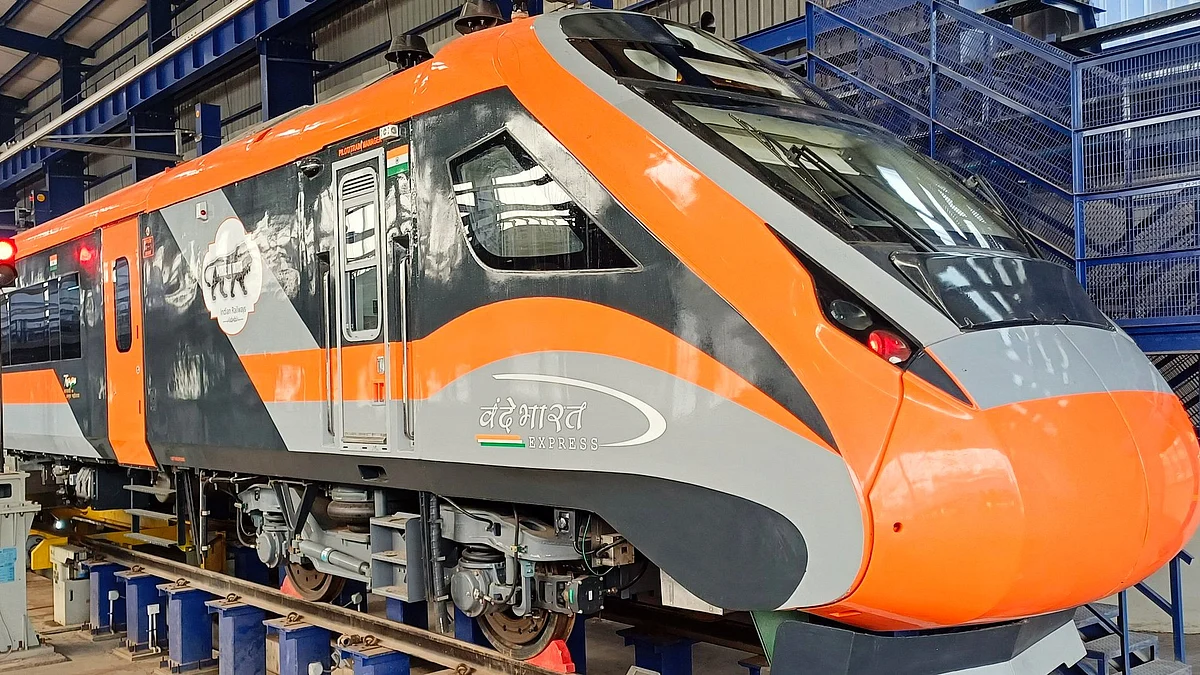Nation
Can Vande Bharat trains for Kashmir cope with enhanced risks of accidental fire?
Ex-railway engineer points out enhanced fire risks as 87 per cent of 111 km route passes through single-track tunnels

Prime Minister Narendra Modi is due to inaugurate one more railway tunnel on Monday, 13 January in Kashmir. Chief minister Omar Abdullah inspected the arrangements and posted photographs on X and said, “The inauguration of the Z-morh tunnel will open Sonmarg to tourism all year round; Sonmarg will now be developed as a great ski resort. The local population will not have to leave in winter & the travel time to Kargil/Leh from Srinagar will also reduce.”
However, are the Vande Bharat trains which will be operational on the Kashmir line designed to withstand freezing winter temperatures? Are they also adequately designed for the enhanced fire safety risk on this line?
The fire safety risk is enhanced because of the high density of long tunnels, in fact, 88 per cent of the route length pass through tunnels. As many as 26 tunnels are longer than one km; of these, eight are longer than 5 km, five are longer than 8 km, and the longest tunnel measures 12.8 km.
To safeguard against the fire risks, trains on this line will have to be fitted with floor and wall coverings, seat cushions and covers, curtains, electric cables etc. made of fire-resistant material. They will require high-capacity, higher-reliability fire extinguishers too.
Published: undefined
The braking system shall also have to be modified to prevent jamming of brakes in the accumulated heat of a fire in the closed confines of long tunnels.
These are just some of the necessary fire safety measures needed in the trains. Besides, a lot of other measures are also needed inside the tunnels. A lot of fire-prevention and fire-fighting measures are needed in both trains and tunnels as per Northern Railway's own report of 2005, which I had written as the convenor of a task force set up by Northern Railway to assess the fire safety hazard potential along with other safety and operational requirements of the line. We prepared a detailed report titled 'Review of The Operational Maintenance and Safety Requirements of the New Line Under the Udhampur Srinagar Baramulla rail Link Project'.
Published: undefined
Fires in tunnels can be devastating, such as the fire in the Kaprun tunnel in Austria (161 passengers died, only 11 survived), and the English Channel tunnel fire in the UK which led to the closure of this tunnel on the vital rail link between the UK and France for about four months.
We assessed the hazard potential of the Kashmir line to be among the highest of any railway line in the world for three main reasons:
Published: undefined
· 87 per cent of the length of the line (97 km out of 111 km) runs through tunnels; most of the tunnels are more than 1 km long, several are over 5 km long, and the longest measures 12.75 km
· It is a single-track line which would make relief and rescue challenging
· The line is in a remote mountainous region with poor road accessibility that adds to the challenge
We made recommendations for fire prevention, fire-fighting and relief and rescue measures. These included diverse initiatives such as enhanced fire safety features in trains, fire-resistant concrete lining in tunnels, special fire extinguishers, water sprinklers in long tunnels, training of staff, forced ventilation in both the main tunnel and the parallel safety tunnels etc.
Published: undefined
I hope the fire safety features of the line (and the trains that will be running on it) are being carefully examined during the ongoing safety inspection. Does this train have the enhanced fire safety features required for safe passage long tunnels? And do the tunnels on the Kashmir line also have necessary enhanced fire safety features? Has the railway trained staff, including station staff, to handle a fire incident in the tunnels, including organising immediate rescue and evacuation of passengers?
The writer retired from the Indian Railway Engineers Service and has been alerting the railways and the public at large on railway safety issues. This piece is compiled from his social media posts over the past two days
Published: undefined
Follow us on: Facebook, Twitter, Google News, Instagram
Join our official telegram channel (@nationalherald) and stay updated with the latest headlines
Published: undefined